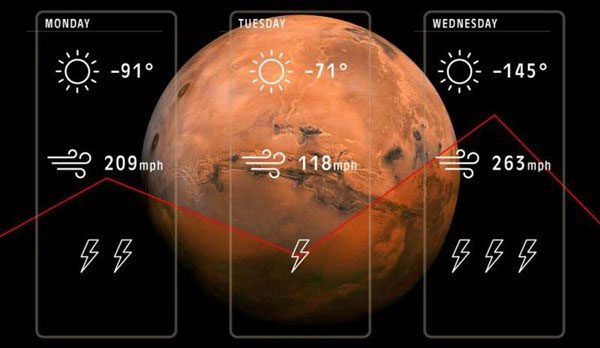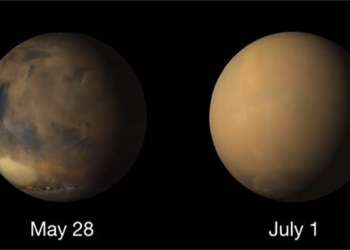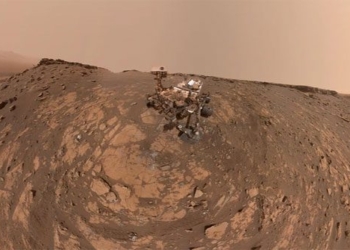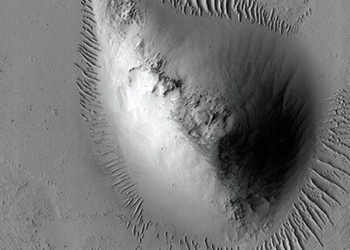When scientists study missions to neighboring planets, they need to forecast the weather accurately. Otherwise, trips can turn into “disasters”.
A new study from Yale University (USA) lays the groundwork for more accurate forecasts about other planets.

Dust storms frequently occur on Mars.
The research team took a phenomenon related to Earth’s jet streams and applied it to weather patterns on Mars, as well as Titan – Saturn’s largest moon.
Lead author J. Michael Battalio, a postdoctoral researcher in Earth and planetary sciences at Yale University’s Faculty of Arts and Sciences, stated: “We can rely on the connection between climate and weather to help predict dust storms.”
On Earth, the regularity of storm systems at mid-latitudes is associated with the “ring mode.” This refers to a variation in atmospheric flow that is not related to seasonal cycles. This phenomenon affects jet streams, precipitation, and cloud formation across the planet.
After 15 years of observing Mars’ atmosphere, Battalio discovered that the Red Planet also has a ring mode, similar to Earth. Additionally, Battalio and colleagues noticed that the ring mode also appears in Titan simulations. In fact, the ring mode on Titan and Mars has a greater influence than on Earth. They may be responsible for half of the wind changes on Mars and two-thirds on Titan.
For Mars, dust storms can occur continuously or appear once every few years. Minor storms last less than a day, while major storms can last for weeks or months. According to Battalio, understanding and predicting these events is crucial for the safety of missions, especially those relying on solar energy.
“During major events, dust can become so thick that daytime appears as dark as midnight. Even without such events, regional storms are still a recurring factor,” researcher Battalio shared.
The research team suggests that this cyclical nature may allow ring modes to predict dust storms. The ring modes affect vortices that cause dust storms. Real-time analysis of the ring mode enables the prediction of dust storms without relying on a complex model.




















































